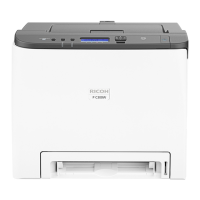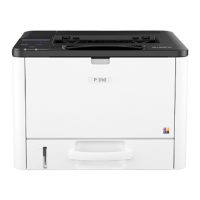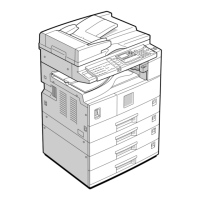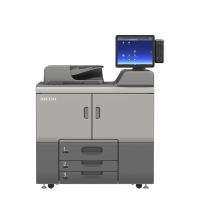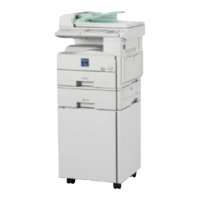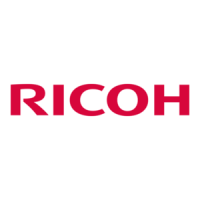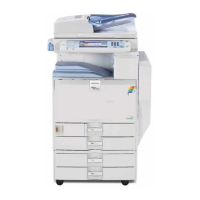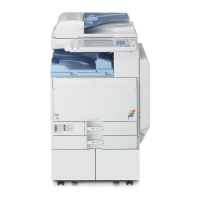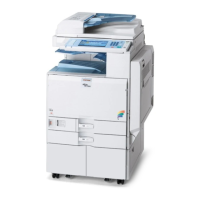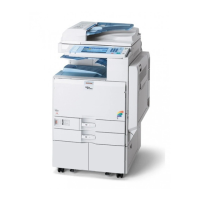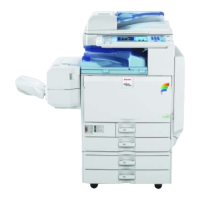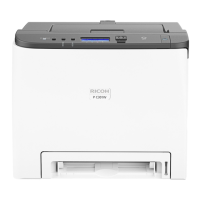
Do you have a question about the Ricoh P C301W and is the answer not in the manual?
| Color | Yes |
|---|---|
| Print technology | Laser |
| Maximum resolution | 2400 x 600 DPI |
| Time to first page (black, normal) | 9.4 s |
| Time to first page (color, normal) | 9.8 s |
| Print speed (black, normal quality, A4/US Letter) | 25 ppm |
| Internal memory | 256 MB |
| Built-in processor | - |
| Sound pressure level (printing) | - dB |
| Cables included | AC |
| Included cartridge capacity (black) | 1000 pages |
| USB 2.0 ports quantity | 1 |
| Wi-Fi standards | 802.11a, 802.11b, 802.11g, Wi-Fi 4 (802.11n) |
| Cabling technology | 10/100Base-T(X) |
| Ethernet LAN data rates | 10, 100 Mbit/s |
| Mobile printing technologies | Apple AirPrint, Google Cloud Print, Mopria Print Service |
| Duplex media weight | 60 - 90 g/m² |
| Paper tray media types | Plain paper |
| Paper tray media weight | 60 - 163 g/m² |
| ISO A-series sizes (A0...A9) | A4, A5, A6 |
| ISO B-series sizes (B0...B9) | B5 |
| Maximum ISO A-series paper size | A4 |
| Total input capacity | 250 sheets |
| Total output capacity | 150 sheets |
| Maximum input capacity | 751 sheets |
| Auto document feeder (ADF) input capacity | 1 sheets |
| Mac operating systems supported | Mac OS X 10.10 Yosemite, Mac OS X 10.11 El Capitan, Mac OS X 10.12 Sierra, Mac OS X 10.13 High Sierra |
| Server operating systems supported | Windows Server 2008, Windows Server 2008 R2, Windows Server 2012, Windows Server 2012 R2, Windows Server 2016 |
| Windows operating systems supported | Windows 10, Windows 7, Windows 8, Windows 8.1 |
| AC input voltage | 220 - 240 V |
| AC input frequency | 50 - 60 Hz |
| Power consumption (printing) | 1300 W |
| Energy Star Typical Electricity Consumption (TEC) | 0.3 kWh/week |
| Printing colors | Black, Cyan, Magenta, Yellow |
| Maximum duty cycle | 65000 pages per month |
| Number of print cartridges | 4 |
| Page description languages | PCL 5c, PCL 6, PostScript 3 |
| Product color | Black, White |
| Market positioning | Home & office |
| Harmonized System (HS) code | 84433210 |
| Depth | 450 mm |
|---|---|
| Width | 400 mm |
| Height | 334 mm |
| Weight | 25000 g |
Information on obtaining and using the printed operating manual.
Information on accessing and viewing the digital operating manual via web or CD-ROM.
Overview of the manual's content, purpose, and explanation of symbols used.
Explains how to identify the machine's region based on its label.
Security features for password protection and restricting machine functions by user.
Lists the Paper Feed Unit TK1220 and its reference name.
Explains that 'IP address' covers both IPv4 and IPv6 environments.
Introduces names and functions of the machine's various parts.
Details external components on the front and rear sides of the machine.
Identifies internal components such as the print cartridge and fusing unit.
Explains the keys and indicators on the machine's control panel.
Step-by-step instructions for installing the optional paper feed unit.
Explains the functions of the control panel and Web Image Monitor for machine operation.
Details on writing machine info to NFC and using NFC for application interaction.
Outlines the workflow for loading paper and specifying type/size.
Step-by-step guides for loading paper into trays, bypass, and envelopes.
Instructions to specify paper type and size using control panel, Web Image Monitor, or printer driver.
Details supported paper types and sizes for Tray 1, Tray 2, and Bypass Tray.
Describes printer functions like duplex and combined printing.
Explains conditions for bidirectional communication and configuring printer options.
Steps to access printing preferences via Start Menu or applications.
Basic procedure for printing documents using the printer driver.
Explains how to resolve paper mismatch errors and cancel print jobs.
How to store, print, and delete Locked Print files for secure printing.
Describes print quality functions and output functions like collating, orientation, and scaling.
Explains basic panel operation, menu chart, and admin tools.
Configures printer, PS menu, system, and tray paper settings for optimal operation.
Configures network settings including wired, wireless, IP addresses, and services.
Explains Web Image Monitor usage, changing interface language, and system information checks.
Configures system settings, tray paper, B&W priority, and timeouts.
Restricts machine functions by user and configures network settings for connectivity.
Step-by-step instructions for replacing the print cartridge, with important notes.
Step-by-step instructions for replacing the waste toner bottle, with important cautions.
Contact service for replacing intermediate transfer unit, fusing unit, or transfer roller.
Provides safety precautions and guidelines for cleaning the machine, avoiding chemicals.
Instructions for cleaning the toner density sensor, friction pad, paper feed roller, and registration roller.
Cautions for moving the machine, and information on disposal and inquiries.
Explains meanings of control panel messages and recommended actions.
Explains the meaning of various indicator patterns on the printer.
Provides cautions and step-by-step instructions for removing paper jams from various machine parts.
Addresses issues like inability to print test pages, paper feed, print quality, and common printer problems.
Configures wired network connections, including IPv4 and IPv6 settings.
Connects to wireless networks via Wi-Fi Setup Wizard, WPS, or PIN code.
Supports IPsec protocol for secure communications, encrypting data packets.
Details the procedure for specifying encryption key exchange settings for IPsec.
Guides on configuring IPsec SA settings on a computer for secure communication.
Lists general, printer function, paper feed unit, power, and noise specifications.
Provides details on print cartridge and waste toner bottle page yields and usage notes.
Includes E-waste, environmental advice, EU country notes, US FCC rules, and Canadian wireless device compliance.
Lists trademarks for software, OS, and operating systems used with the machine.
